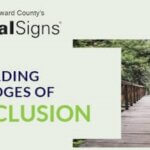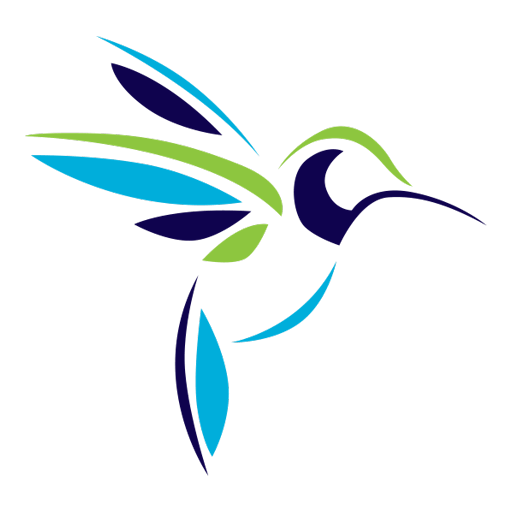Community: Diversity & Inclusion
Vital Signs Data

Updated December 28, 2023
Public health recognizes the strong relationship between the social determinants of health and health outcomes. Racism and employment are two key social determinants of health.
An inclusive community is welcoming to diverse groups of people, including seniors, youth, children, Indigenous peoples, immigrants and newcomers, gender diverse, persons with disabilities, people experiencing mental health challenges, and low-income populations. (Accessibility Canada, Pathways to Recreation)
Population diversity
| POPULATION | PEC 2006 | PEC 2011 | PEC 2016 | PEC 2021 | ON 2021 | SOURCE |
|---|---|---|---|---|---|---|
| Permanent population | 25,496 | 25,258 | 24,735 | 25,704 | -- | Stats Can |
| Visible minority | 1.3% | 1.8% | 2.2% | 3.1% | 34.3% | Stats Can |
| Indigenous | 2.5% | 2.5% | 3.0% | 3.2% | 2.9% | Stats Can |
| Immigrants (foreign-born) | 9.5% | 8.6% | 10.9% | 10.0% | 30.0% | Stats Can |
Ethno-cultural composition
PEC's Rank is 4/5 or highly deprived of ethno-cultural diversity.
Ethno-cultural composition refers to the community makeup of immigrant populations, and for example, takes into consideration factors such as the proportion of the population who are recent immigrants, the proportion of the population who self-identified as visible minority, the proportion of the population born outside of Canada, and the proportion of the population with no knowledge of either official language (linguistic isolation).
Ontario Marginalization Index 2016 map showing areas of ethnic concentration. Darkest blue areas are the most diverse. (Ontario Public Health, Social Determinants of Health Map)

Visible minorities
In 2021 in Prince Edward, 3.1 percent of the population was classified as a visible minority, an increase of 0.9 percent since 2016. However, this is still far below the provincial rate of 34.3% (Prince Edward County 2021 Census Profile)
All Welcome Here Rural BIPOC Association is focused on connecting residents to each other, to anti-racist education, and to pathways to local action. See details at allwelcomehere.ca
Survey results released in February 2022 showed that as more people choose to call PEC home, our BIPOC community is also growing. As the BIPOC community grows, so do reports of racist incidents happening across PEC. See the survey results.
Identifying as Indigenous
Tyendinaga Mohawk Territory is our neighbouring community.
In 2021, 3.2 percent of Prince Edward residents identified as Indigenous, compared to the province at 2.9 percent. That’s up 6.7 percent since 2016. Of those, 2.1 percent reported a First Nations identity and 0.8 percent reported a Métis identity. An additional 0.2 percent reported other Indigenous identities. (Prince Edward County 2021 Census Profile)
Immigrants
In 2021, 10 percent of the population was foreign-born, 20 percentage points lower than the provincial average (30%). The percent of the population that is foreign-born is down 0.9 percentage points from 2016 (10.9%). (Prince Edward County 2021 Census Profile)
New to the community?
The Newcomers Group provides an opportunity to meet other people who are new to the area as well as share all the great restaurants, shops and groups you’ve learned about. You can also bring any questions you might have. Guest speakers will be invited to share information about their organizations. Reserve your space at peclibrary.org.
Languages spoken at home
In 2021, in Prince Edward, 98.3 percent of the population spoke English most often at home; 0.33 percent spoke French; and 1.02 percent spoke non-official languages. Indo-European languages are the most common non-official languages spoken most often at home. (Prince Edward County 2021 Census Profile)
Interested in enhancing your French language skills? Visit PEClibrary.org events calendar for free workshops.
Persons with disabilities
![]() Persons with disabilities are among the most excluded in our society. They are less likely to access health care, education, employment and to participate in the community. An integrated approach is required to ensure that persons with disabilities are not left behind.
Persons with disabilities are among the most excluded in our society. They are less likely to access health care, education, employment and to participate in the community. An integrated approach is required to ensure that persons with disabilities are not left behind.
In 2017, one in five (22%) of the Canadian population aged 15 years and over had one or more disabilities. The prevalence of disability increased with age. Among youth (aged 15 to 24 years), mental health-related disabilities were the most prevalent type of disability. (Statistics Canada, Canadian Survey on Disability Reports, November 28, 2018)
Also see Accessibility
Gender diversity
2021 Census of Population data on gender diversity
The 2021 Statistics Canada Census of Population included for the first time a question on gender and the precision of “at birth” on the sex question, allowing all cisgender, transgender and non-binary individuals to report their gender. Canada is the first country to collect and publish data on gender diversity from a national census.
About 4% of Canadians aged 15 years and older identify as lesbian, gay, bisexual, or with a different sexual orientation than heterosexual. In PEC, that would be over 1,000 individuals.
Over time, the acceptance and understanding of gender and sexual diversity has evolved. Further, there has been social and legislative recognition of transgender, non-binary and LGBTQ2+ people in general. Younger generations may be more comfortable reporting their gender identity than older generations. (The Daily, Statistics Canada 2022-04-27)
Support and allyship locally is shown through:
- County Pride events and Rainbow registered businesses
- GSA gender & sexuality alliance at Prince Edward Collegiate.
- Discover YOUth! is an all-inclusive weekly drop-in for 2SLGBTQ+ youth and allies. The program features guest speakers, field trips, art projects and of course – snacks! For youth ages 12+. Have Questions? Visit www.peclibrary.org/lgbtq. Transportation can be arranged for youth in need.DiscoverYOUth safe spaces and support network; and GSA gender & sexuality alliance at Prince Edward Collegiate.
- More can be done, for example youth have asked for consistent access to sexual health education that is inclusive and relevant, and for mental health support from qualified professionals with lived experience.
Sources
Definitions
Visible Minorities
The Employment Equity Act defines visible minorities as "persons, other than Aboriginal peoples, who are non-Caucasian in race or non-white in colour." In Prince Edward, the visible minority population consists mainly of the following groups: South Asian, Chinese, Black, Filipino, Latin American, Arab, Southeast Asian, West Asian, Korean and Japanese.
Methods and Limitations:
For more information on the Visible minority variable, including information on its classification, the questions from which it is derived, data quality and its comparability with other sources of data, please refer to the Visible Minority and Population Group Reference Guide, Census of Population, 2016.
Population Identifying as Indigenous
According to Statistics Canada, Indigenous identity (referred to in Statistics Canada materials as “Aboriginal” identity) refers to people who self-identify as First Nations (North American Indian), Métis or Inuk (Inuit) and/or those who are registered or Treaty Indians (that is, registered under the Indian Act of Canada) and/or those who have membership in a First Nation or Indian band.
Methods and Limitations:
Users should be aware that the estimates associated with this variable are more affected than most by the incomplete enumeration of certain Indian reserves and Indian settlements in the 2016 Census of Population. For more information on Aboriginal variables, including information on their classifications, the questions from which they are derived, data quality and their comparability with other sources of data, refer to the Aboriginal Peoples Reference Guide, Census of Population, 2016 and the Aboriginal Peoples Technical Report, Census of Population, 2016.
Immigrant (Foreign Born) Population
Immigrants include persons who are, or who have ever been, landed immigrants or permanent residents. Such persons have been granted the right to live in Canada permanently by immigration authorities. Immigrants who have obtained Canadian citizenship by naturalization are included in this category. In the 2016 Census of Population, 'Immigrants' includes immigrants who landed in Canada on or prior to May 10, 2016.
In 2001, the Census of the Population specifically denoted ‘foreign-born population’. In 2006, 2011 2016 and 2021, the Census of the Population and the National Household Survey displayed ‘Immigrant Population’.
Sources:
National Household Survey (NHS) Profile 2011, Ontario
Statistics Canada. 2017. Prince Edward County, CY [Census subdivision], Ontario and Ontario [Province] (table). >Census Profile . 2016 Census. Statistics Canada Catalogue no. 98-316-X2016001. Ottawa. Released November 29, 2017
Statistics Canada. 2022. (table). Census Profile. 2021 Census of Population. Statistics Canada Catalogue no. 98-316-X2021001. Ottawa. Released September 21, 2022
Statistics Canada, Canadian Survey on Disability Reports, November 28, 2018
Sustainable Development Goal (SDG) 11
Make communities inclusive, safe, resilient and sustainable.
Also see …
Diversity & Inclusion
Ethno-cultural composition, trends over time, languages spoken at…
Sense of Belonging
Sense of belonging, residential stability, changing sense of…
Accessibility
Accessibility benefits everyone. A barrier-free approach is required…
Arts Culture Recreation
Creative economy. Arts & Festivals. Sports & recreation.…
Community – Actions
Advancing well-being together: The Vital Signs focus this…









